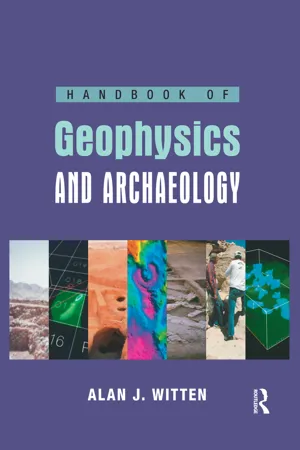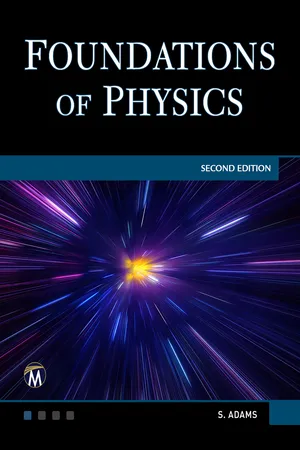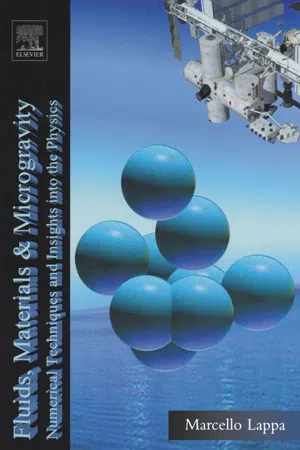Technology & Engineering
Gravitational Attraction
Gravitational attraction is the force of attraction between two objects with mass. According to Newton's law of universal gravitation, the force of gravitational attraction is directly proportional to the product of the masses of the objects and inversely proportional to the square of the distance between their centers. This fundamental force governs the motion of celestial bodies and is crucial in fields such as astronomy and physics.
Written by Perlego with AI-assistance
Related key terms
4 Key excerpts on "Gravitational Attraction"
- eBook - ePub
- AlanJoel Witten(Author)
- 2017(Publication Date)
- Routledge(Publisher)
2 Gravity: The Pull of the EarthGravity is a force of mutual attraction between two masses and it will be shown here how this force can be exploited to detect and locate shallowly buried objects. Further discussions of gravitational force require more explanation of what is meant by force, mass, and other quantities, such as density, volume, acceleration, vectors, and scalars. These discussions will be presented throughout this chapter but, for the moment, consider the two masses, m and M, illustrated in Fig. 2.1 separated by a distance R.Figure 2.1. Geometry used in the definition of gravitational force.The gravitational force acting between these two masses is the product of the masses mM and varies inversely proportional to the square of their separation R.A very basic definition of force is a quantity that causes motion or a change in motion. Thus, a gravitational force can induce a motion in either of the two masses. It is impossible to determine if m is stationary and M moves towards m, M is stationary and m moves towards M, or both masses move towards each other. The perception of motion depends on the reference frame from which observations are being made. An intuitive example of this is the perception of motion within a moving train. Stationary objects outside of a moving train appear to be in motion when viewed from within the train. Although the train is in fact moving, it can appear stationary, with external objects moving when they are observed from a reference frame within the train.With geophysical measurements made on or near the surface of the Earth, it is assumed that the Earth is stationary and objects on or above its surface move towards it under the force of gravity. Thus, elevating an object above the surface of the Earth and subsequently releasing it will result in its 'falling' back to the surface of the Earth.Thus far, the discussion of gravity has been limited to forces between two masses. A more complete understanding of gravitational forces requires an understanding of the forces among many masses. For example, consider the three masses shown in Fig. 2.2. If it is assumed that massesMlandM2each exert a force on mass in, a question arises as to the nature of the motion induced on m - eBook - ePub
- Steve Adams(Author)
- 2023(Publication Date)
- Mercury Learning and Information(Publisher)
23THE GRAVITATIONAL FIELD23.1 GRAVITATIONAL FORCES AND GRAVITATIONAL FIELD STRENGTHGravity is one of the four fundamental forces. It has an infinite range and obeys a similar inverse-square law to electrostatics. All masses create gravitational fields but unlike the electrostatic forces between charges, which can be attractive or repulsive, gravitational forces are always attractive. The gravitational force acting on a mass close to the surface of the Earth is called weight.23.1.1 Newton’s Law of GravitationNewton stated that two-point masses would exert an attractive force on one another that is directly proportional to the product of the masses and inversely proportional to their separation. the minus sign indicates attraction.G is the universal constant of gravitation, G = 6.674 × 10− 11 Nm2 kg− 2 .Newton was also able to show that the force of attraction between spheres of uniform density is the same as the attraction between two point masses placed at their centers. This means that we can treat object like planets and stars as point masses when considering the orbital motion. It is also important to note that, by Newton’s third law, the forces on each mass have the same magnitude, even if the masses are different. For example, the weight of an apple in the Earth’s gravitational field is the same as the weight of the Earth in the apple’s gravitational field. It is also the case that the gravitational force exerted on the Earth by the Moon is equal in magnitude to the gravitational force exerted on the Moon by the Earth.The resultant gravitational force on a body affected by the gravitational fields of several other objects (e.g., the Earth affected by the Sun, Moon, and other planets) is the vector sum of the gravitational forces from each of the other objects.23.1.2 Gravitational Field StrengthThe idea that gravitational forces arise from a gravitational field removes the difficulty of an action-at-a-distance explanation. The Moon is attracted to the earth because it experiences a force from the gravitational field where it is - eBook - ePub
Fluids, Materials and Microgravity
Numerical Techniques and Insights into Physics
- Marcello Lappa(Author)
- 2004(Publication Date)
- Elsevier Science(Publisher)
CHAPTER 1Space research
1.1 What is microgravity?
Gravitational Attraction is a fundamental property of matter that exists throughout the known universe. The presence of Earth creates a gravitational field that acts to attract objects with a force inversely proportional to the square of the distance between the center of the object and the center of Earth. When the acceleration of an object acted upon only by Earth’s gravity at the Earth’s surface is measured, it is commonly referred to as one-g (1g) or one Earth gravity. This acceleration is approximately 9.8 meters per second squared (m/s2 ). The weight of an object is the gravitational force exerted on it by Earth.While the mass of an object is constant and the weight of an object is constant (ignoring differences in g at different locations on the Earth’s surface), the environment of an object may be changed in such a way that its apparent weight changes.Although gravity is a universal force, there are times, in fact, when it is not desirable to conduct scientific research under its full influence. In these cases, scientists perform their experiments in “microgravity,” a condition in which the effects of gravity are greatly reduced, sometimes described as “weightlessness.” This description brings to mind images of astronauts and objects floating around inside an orbiting spacecraft, seemingly free of Earth’s gravitational field, but these images are misleading. The pull of Earth’s gravity actually extends far into space. To reach a point where the Earth’s gravity is reduced to one-millionth of that on Earth’s surface, one would have to be 6.37 million kilometers away from Earth (almost 17 times farther away than the Moon). Since spacecraft usually orbit only 200–450 km above Earth’s surface, there must be another explanation for the microgravity environment found aboard these vehicles (Rogers et al., 1997 - eBook - ePub
Basic Engineering Mechanics Explained, Volume 1
Principles and Static Forces
- Gregory Pastoll, Gregory Pastoll(Authors)
- 2019(Publication Date)
- Gregory Pastoll(Publisher)
different reading, measurably less than 26 kg. To understand this, we need to understand the connection between weight and gravity.Weight, Newton’s Law of Gravitation, and gravitational accelerationIsaac Newton, following the work of Robert Hooke, confirmed that a gravitational force exists between any two objects in the universe. Simply due to the fact that the objects have mass, they attract each other. This means that if two rocks are drifting in space, near one another, they will each exert a pull on the other, the result of which is that they will gradually accelerate towards one another. The more mass the two objects possess, the greater is this force. The further apart they are, the smaller is this force. Newton’s Law of Gravitation tell us that the magnitude of the gravitational force, F, depends on these variables, in the following relationship:F = (Gm1 m2 )/r2Where G is the universal gravitation constant, m1 and m2 are the masses of the two objects, and r is the distance between their centres of gravity.This law applies to all bodies, not only to the gravitational force between a given object and the Earth. Every object that possesses mass attracts every other object with a force of attraction given by the above equation. It might be hard to believe that two pencils lying on your desk exert a gravitational pull on one another, but they do. The magnitude of this pull is insignificant, because both of their masses are vastly smaller than the mass of the earth.The magnitude of the gravitational force of attraction between two small objects was first determined in a famous experiment by the British scientist Henry Cavendish in 1797. A torsion wire suspended from an overhead beam supported a horizontal rod, on the ends of which were mounted two small lead spheres.When the rod had settled into an equilibrium position, two larger spheres were brought from a distance, to a position on the circle of movement close to the small ones, and equidistant from them. The small spheres moved towards the larger ones with a force that could be determined by the amount of twist they caused in the torsion wire.
Index pages curate the most relevant extracts from our library of academic textbooks. They’ve been created using an in-house natural language model (NLM), each adding context and meaning to key research topics.



